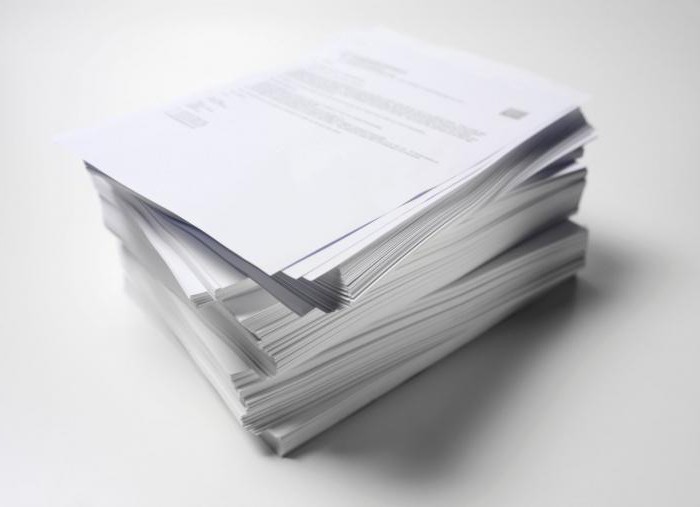The claim procedure for resolving a dispute in the arbitration process underwent changes in 2016, when new standards were introduced into law on June 1.

And what's new?
According to the updated rules, the plaintiff who wants to initiate the procedure must make a claim and send it to the counterparty. This happens before the lawsuit goes to court. Is a claim procedure mandatory in the arbitration process, or can you avoid contacting a problem partner? According to new standards, this step is mandatory. The requirement applies to any conflicts related to civil legal relations (though corporate ones go separately).
Under the new laws, the plaintiff has 30 days to make a claim, and the addressee of the paper for the same period needs to prepare an answer. However, in the case of specific conditions of the contract, a different time frame is possible.
Claim: what it looks like
Compliance with the claims procedure in the arbitration process begins with the correct execution of the claim. So, it should essentially contain a detailed description of the plaintiff's claims. Since the conflict is usually associated with the presence of some contract violated by one of the parties, a participant with infringed interests immediately formulates his claims for forfeit. If there was any use of other people's finances, he specifies what interest he wants to receive for this in exchange.
In the event that the defendant does not comply with the terms of the claim procedure in the arbitration process specified by the plaintiff in an official manner, you can send an official paper to the court. In it, the plaintiff indicates all his claims, and also describes in detail the obligations by virtue of which the court obliges the defendant to eliminate the violations. For example, if there is a debt, the plaintiff describes in detail how it was formed, and also indicates the maturity, and the court, having examined the document, forces the counterparty to pay off the obligations. In practice, the amount indicated in the claim is often less than the amount that the counterparty will have to pay. This happens due to the addition of penalty to this value.
And when not?

The concept of claims in the arbitration process is somewhat different for cases related to:
- legal facts;
- Compensations accompanying violation of court proceedings;
- bankruptcy;
- corporate conflicts;
- protection of interests, rights of a certain group;
- termination of protection of the rights of an unused trademark;
- disputed conclusions of the arbitrators.
And what about the time?
As stated above, the plaintiff has 30 days to send an appeal to the court. But this deadline is the deadline, in fact, you can write an official statement earlier. The main condition is the presence of a counterparty response. If one arrived earlier, then the court can be brought before.
Compliance with the claims procedure in the arbitration process is not required if it comes to a counterclaim. This is due to the fact that the claim is already held by the judge.

Don't forget anything
The consequences of non-compliance with the claims in the arbitration process can be the most unpleasant - it is financial loss, and failure to defend their interests. To prevent this from happening, you need to take the issue responsibly. In particular, when sending an application, it is necessary to attach documentation to it, confirming the rights, obligations, requirements of each party.
The fact that the documentation should accompany the statement of claim, says the seventh paragraph of the first part of the 126th article of the agro-industrial complex.But if the plaintiff did not want to concern himself with the fulfillment of this requirement, then the motion on the application did not happen, which in the future leads to the return of the paper to the sender. Another option: the judge may ignore the application, that is, refuse to consider.
Public Relations
If we are talking about such a category of interaction in society, then the pre-trial claim procedure in the arbitration process is mandatory only in relation to the cases described in the current laws.

Example: the law contains a clear description of conflict situations related to an attempt to register as a legal entity. If the decision of the territorial authority responsible for registration does not satisfy the initiator of the process, the person with impaired rights must comply with the type of claim procedure, as provided by law, in the arbitration process dedicated to restoring justice in this situation.
Order production
This concept in the types of arbitration processes, the claim procedure peculiar to them, has not previously been mentioned. It was introduced only in the summer of 2016. According to the rules now in force, a special procedure is applied for those cases in which there is a court order playing the role of executive documentation. Production involves consideration of the application for such an order and decision-making on this issue.
This procedure is not new for lawyers - it is described in Chapter 11 of the Code of Civil Procedure and has previously been used in civil matters. But arbitration has a number of distinctive features. So, a statement initiating the procedure for issuing an order can be sent when the collector requires something on the basis of an agreement that was not executed by the counterparty or executed incorrectly. The justification is the documentation confirming monetary obligations. In this case, the debtor must recognize these papers, but evade execution. The claim procedure in the arbitration process involves applications of no more than 400,000 rubles. In the process, a notary is involved, and the debtor is presented with requirements with sanctions and payments that he must make.
Some features
In some aspects, the claims procedure in the arbitration process has become even easier than it was before the summer of 2016. For example, now it is not necessary to apply to the court with a paper application. The document can be prepared in electronic form and sent via the Internet. For this, a special system called “My Arbiter” was introduced.
Regardless of the form in which the plaintiff sends applications to the arbitration court, he will have to pay the state fee. Recently, the tariff is as follows: they assess the state duty assigned in a similar case when considering a property claim, divide the figure in half.

To decide whether a court order is needed or not, it is not necessary to organize meetings. Accordingly, if earlier the parties received notifications, now they decided to refuse it. The collector sends the court the documentation on the basis of which the judge makes a decision and already sends it back. The claim procedure in the arbitration process involves sending a response within 5 business days. A participant in the process recognized by the debtor may formulate an objection - by law he has 10 days to do so.
Simplified system: innovations
The claim procedure in the arbitration process for simplified cases also changed in 2016. For example, the variety of those situations has become wider, the consideration of which is possible in a simplified order. In particular, this option is applicable for those claims, the amount of which is up to 500,000, if the plaintiff is a legal entity. If this is an IP, then the upper limit for the simplified procedure is 250,000 rubles. Prior to these innovations, one could count on simpler clerical work only with a claim amount of 300 and 100 thousand, respectively.

The second feature is related to the volume of decisions related to cases considered in a simplified manner. The operative part is still required to be formulated, but its publication is possible via the Internet, this is enough. However, if one of the parties draws up a statement, the judge will have to work out the decision in full and forward it to the person concerned.
The application for the full text is possible within 5 business days from the date of publication of the data on the Internet. Another five days the law gives the judge to draw up an official document. Information on this can be found in the second part of article 229 of the agro-industrial complex.
Exceptions: are there any?
So, as previously mentioned, such an order, when the appeal is first sent to the counterparty, and only then to the court, was introduced as mandatory. But is it possible to non-compliance with the claim procedure in the arbitration process? Practice shows that this can be avoided for a number of specific cases. Their list has already been mentioned: these are cases related to bankruptcy, rights, trademarks and some other objects.
Why was this decision made? The legislature decided that in all these cases it is unacceptable to delay the study of the situation by the court, but it is necessary to proceed with the decision immediately. That is why non-compliance with the claims procedure in the arbitration process became possible, although it was accepted as mandatory. You need to understand: exceptions are not randomly highlighted. In any of these cases, time is a key factor. The delay leads to the fact that the applicant is at a very disadvantage.
How was it before and how is it now?
According to previously existing legal standards, non-compliance with the claim procedure in the arbitration process was allowed in a fairly wide range of cases, although such a procedure was considered mandatory. However, if by law in a situation it was necessary, the court did not begin consideration of the claim until the procedure was followed.

The updated rules included requirements for the availability of documentation confirming that the complaint procedure was followed. If for a specific case it is not applicable, but another pre-trial procedure is relevant, the papers submitted to the court should indicate that the procedure has been correctly completed. If the plaintiff did not provide such documentation, the court will not study the information.
Another order: what is it?
What is hidden under the term “a different pre-trial order”? This is such a situation when attempts were made to resolve the conflict situation through official correspondence, telegrams and documentation. In addition, it is possible to write statements, answers to them, interactions with various authorities, which can help level the situation. For example, it is customary to resort to the help of an arbitrator. In a word, the choice of conciliation procedures in our country is quite large. It is important that each such step is documented and maintained. All this will come in handy later in the arbitration court (unless, of course, it can be avoided).
As for judicial practice, it can be seen from it: the main task of the pre-trial order is to unload the arbitration court. This, in turn, should affect the quality of each individual process. Nevertheless, many lawyers to this day doubt the effectiveness of the innovation. This is due to habits rooted in the business environment: entrepreneurs prefer to resort to the court as the final and most reliable option. Consequently, the complaint procedure becomes only a “paper fraud” without real benefit.
The main problems of the claim order
Many risk situations were foreseen even before the start of real court practice in 2016. In particular, lawyers predicted in advance that the duration of all cases would increase, the processes would turn into lengthy.Well, the increase in terms, in turn, leads to other risks - for example, counterparties will try to hide the property, remove it from the balance sheet of companies, which means that it becomes extremely difficult to achieve justice.

Strategies have been developed to protect yourself from dishonest partners. Some of them concern pre-trial settlement. The most effective option is to obtain the consent of both parties to reduce the period from 30 days to a shorter time period. At the same time, they propose to include the following wording in the contracts concluded: “taking into account the circumstances”. It is also recommended to document electronic workflow with contractors. This helps shorten the time and ultimately leads to benefits for both parties.
What else to look for?
From the point of view of a certain group of lawyers, the mandatory claim procedure infringed on the rights of the parties. In addition, unscrupulous participants can use it to unnecessarily delay the consideration of a controversial situation and ultimately reduce it to their advantage.
Quite often before, and now in judicial practice, there are situations when one plaintiff sends several claims at once. But the updated order, he must comply with pre-trial procedures separately for each of the requirements put forward. In itself, filing a lawsuit in such a situation is rather complicated, but the updated requirements have turned it into even more confusing and problematic. Of course, in this situation, any plaintiff wants to reduce the time intervals and simplify interaction with the court. To achieve this, it is most convenient to submit claims to the court separately. True, the main problem of this approach is the complete contradiction to the idea of unloading ships. For any outcome, consideration is delayed, no matter what behavior strategy the plaintiff chooses.
Order litigation: details
Order proceedings involve the study of an application in which the plaintiff requests a court order. In this case, there is no need to provide documentation and evidence to other parties to the process, but the debtor has the right to file an objection to the case. The option involves speeding up the generally accepted procedure due to the exclusion of legal disputes.

Simplification is possible when considering the twentieth chapter of the agro-industrial complex. A distinctive feature of such paperwork is the prompt execution of the decision. But if it comes to order proceedings, then the court issues an order playing the role of executive documentation. In this case, the order is a classic for a regular court decision.
In the simplified proceedings in court, you can appeal the decision by contacting the appellate court. This is given 15 days. But in the case when the case is examined in accordance with article 22, then the appeal should take place in a slightly different way: the cassation order.
If the decision was made by the court of the first intention, it can be redirected to the arbitration soup, to the court responsible for the appeal. The arbitral tribunal may render in a situation when the deadlines established by law have been missed. In this case, you can also send the document to the appeal commission. The grounds for appealing the decision are listed in the fourth part of the 288th article of the APC.
To summarize
So, the mandatory claim procedure in the arbitration court was put into effect in a new form only last summer, and until the courts have accumulated a sufficiently large amount of data so that it can be confidently said that the innovations allowed to unload the court or only led to a delay in cases .

Of course, updating the legislation turned out to be controversial, and the requirement to comply with the settlement procedure before the court caused a lot of complaints and discontent, especially from businessmen who were used to immediately contacting a third party to restore justice.However, with the exception of the rare cases of exceptions, compliance with the order is mandatory, and each step should be officially documented.